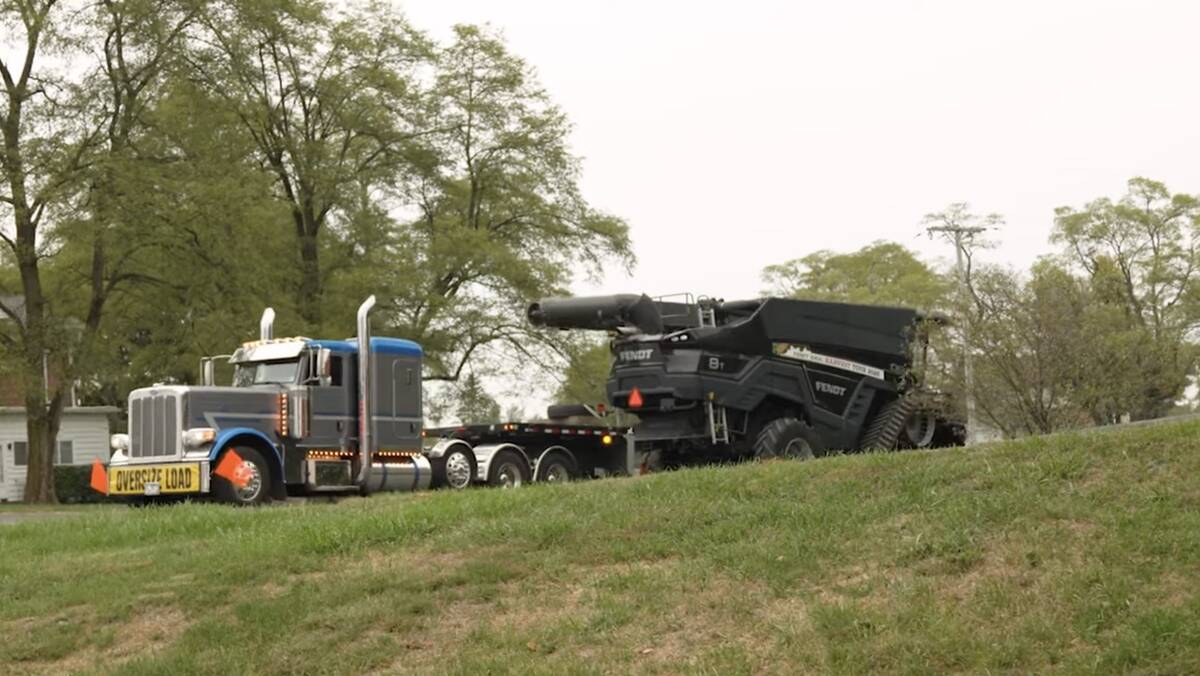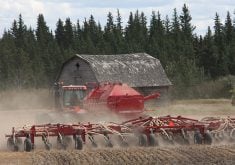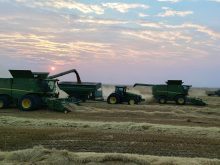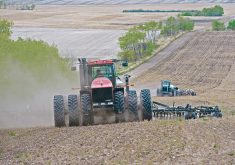FARGO, N.D. — The centre section is always the heaviest component on any brand of corn planter. As planters continue to grow in size, weight on the centre section grows accordingly.
A centre section running on round rubber tires creates ridges, increases the odds of getting stuck in wet conditions and causes soil compaction in all conditions, according to Mike Huck of Soucy Track Systems in Selkirk, Man.
“There’s so much weight on the centre section now that wheels are sinking, and that causes all kinds of problems at seeding time,” he said during the Big Iron Farm Show in Fargo.
Read Also

Fendt takes a combine on the road in the U.S.
Putting an Ideal combine in fields across different regions has given the brand a chance to prove that the combine is capable of performing well in a variety of conditions.
Farmers are finding that it’s bad business to buy a high volume planter if they can’t fill the compartments. Those who have converted to rubber tracks on their planter or the cart on their air drill say it allows them to work that machine to full capacity.
They also have smoother fields for spraying and harvest, which Huck said is a factor people often overlook.
In addition to compacting the soil, tires also build a ridge or pile of soil along the sides of their indentation. This ridge can stunt the growth of plants seeded there.
“One comment we hear from sprayer operators is that when they’re doing fields seeded with tracks, they can hardly tell where the planter went,” he said.
“The tracks almost completely disappear, which is easy to see because one track has a surface that’s about five times bigger than one tire.”
Huck said the tracks Soucy designed for Deere have a total gross flat plate of 1,664 sq. inches, while the standard Alliance/Galaxy 11-22.5 12PR tires for the planter have a total gross flat plate of 328 sq. inches.
In terms of pressure on the soil, the Soucy exerts 12.5 p.s.i. per track while the tire setup exerts 63.4 p.s.i.
Soucy says its track system contributes to a fuel saving of four percent when working in dry soil conditions. That benefit increases exponentially when fields get muddy, it says.
One farmer inspecting the display unit at Big Iron commented on what he thought was a high number of grease zerks, saying the industry trend is toward more self-lubricating components, not more grease zerks.
“There’s always some maintenance on any machine like this,” Huck responded.
“Here, at least, the grease fittings are all in the open and very easy to get at.”
The system Huck displayed at Big Iron is designed specifically for 12 to 24 row 1770 and 1775 planters, which are available only through John Deere dealers.
“I’m not saying you couldn’t put them on some other planter, but it would be a lot of work. You’d have to be a pretty good welder,” Huck said.
The tracks were introduced last year, while the pressurized nitrogen shock absorbers were added this year to stabilize tension on the track and help prevent unwanted vertical action of the centre section.
No modifications or welding are required in the installation, and the planter can easily be converted back to tires.
Soucy tracks for a JD 1770NT or 1775NT planter carry a price tag of $44,373 plus freight and installation.
















